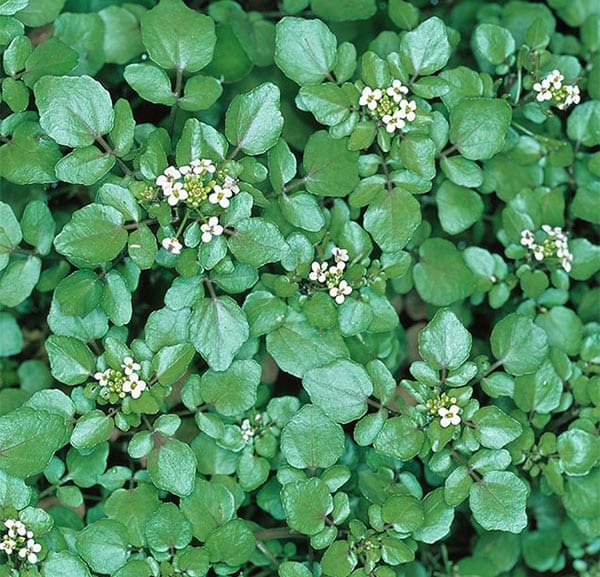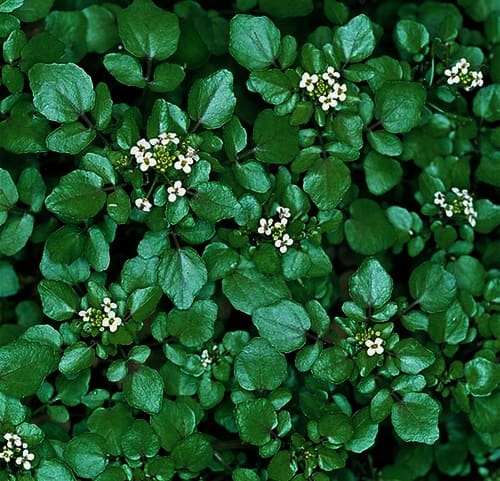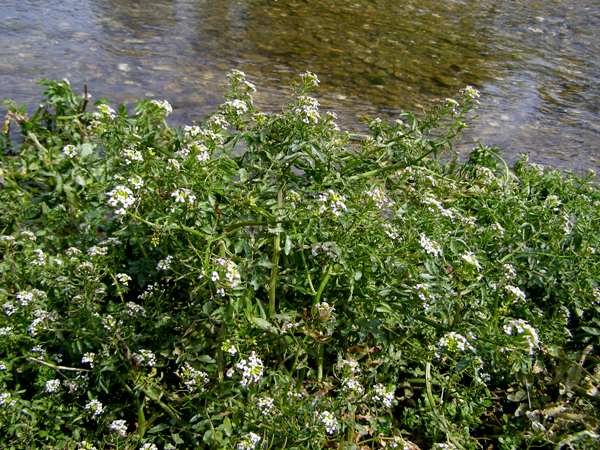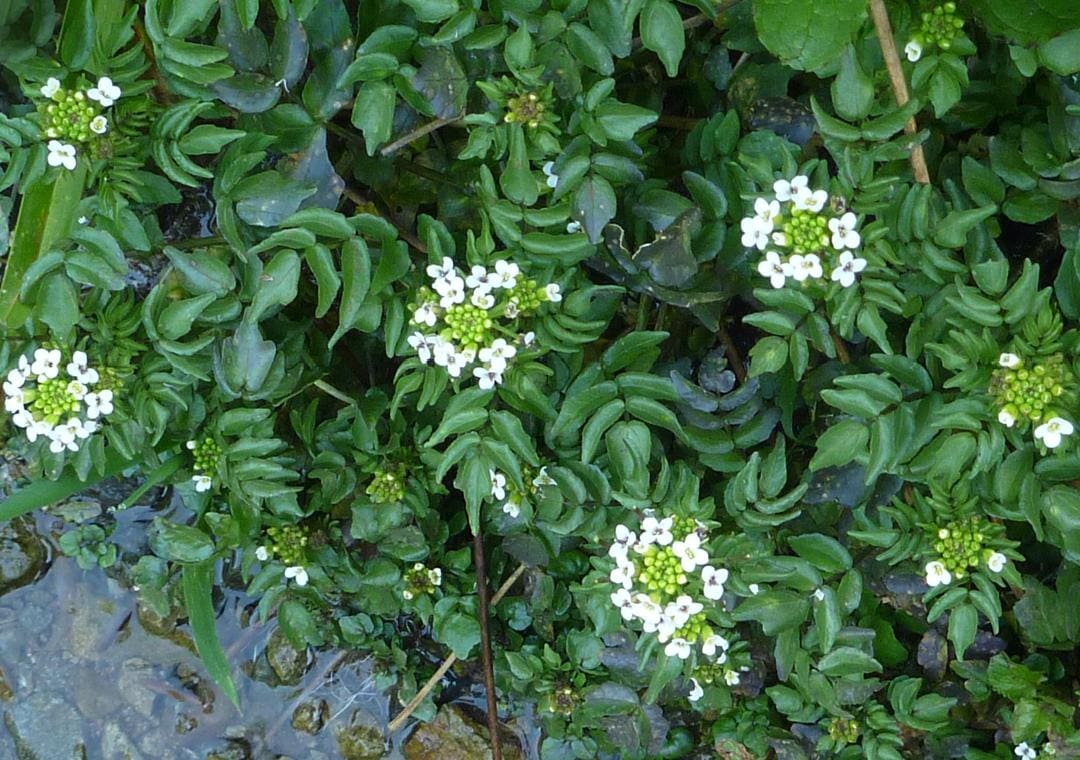Embarking on a knowledge journey about the aquatic plant Nasturtium Officinale, you will encounter an in-depth and enlightening discussion on its characteristics, growth, and ecological impact. Navigating through this comprehensive exploration, you will be steered towards a thorough understanding of how this unique-species thrives in watery surroundings, its distinctive features and the potential influences it has on its habitat. This exploration will undoubtedly expand your botanical knowledge base and enhance your appreciation for the intriguing subtleties of the aquatic flora world.

Identification of Nasturtium Officinale
Nasturtium Officinale, also commonly known as watercress, is a semi-aquatic perennial plant. This plant, known for its peppery flavor and nutritional content, is one of the oldest known leaf vegetables consumed by humans. Let’s delve into a deeper understanding of this plant, starting with its description.
Description of Nasturtium Officinale
You would usually identify the Nasturtium Officinale through its small, white and green flowers, which exhibit a unique cross pattern that peculiarly reflects the plant’s family name, Cruciferae. The plant grows in trailing stems covered in green, rounded leaves.
Physical Attributes
Nasturtium Officinale typically grows up to 50-120 cm in height. The plant consists of hollow stems that end in clusters of leaves, offering it a buoyancy in its preferred aquatic environments. The leaves are pinnately compound with 3-9 leaflets, each rounded in shape and approximately 1-5 cm long.
Color and Texture
The plant is primarily radiant green in color, with small, white flowers blossoming during the flowering season. The leaves of this aquatic plant are noticeably succulent and tender in their youth. They grow denser and coarser as they mature.
Scientific Classification of Nasturtium Officinale
To understand the position of Nasturtium Officinale in our natural ecosystem, it’s critical to discuss its scientific classification.
Domain and Kingdom
Nasturtium Officinale belongs to the domain Eukarya, indicating that its cellular structure consists of a nucleus and membrane-bound organelles. It is a member of the Plantae kingdom, showing it is a multicellular, photosynthetic organism.
Class, Order, and Family
The watercress plant falls under the Class Magnoliopsida, commonly known as the Dicotyledons. It is of the Order Brassicales, characterized by its mustard-like aroma, and is a member of the good-sized Family Brassicaceae, or as traditionally known, Cruciferae.
Genus and Species
The Genus Nasturtium, to which our plant belongs, derives its name from the Latin words for nose (nas) and twist (tortus). The species name, officinale, refers to the plant’s long-standing use in traditional medicine.
Habitat of Nasturtium Officinale
Nasturtium Officinale is known for its resilience and adaptability, though it thrives in certain environmental conditions.
Geographical Distribution
Native to Europe and Asia, Nasturtium Officinale is today distributed across all continents with temperate climates due to human introduction. The plant is extensively found in North America, South America, Australia, and New Zealand.
Preferred Environment
Nasturtium Officinale is essentially a semi-aquatic plant that preferentially grows along the slow-running water bodies such as stream edges, cool springs, and marshes.
Climatic Conditions
In terms of climate, Nasturtium Officinale appreciates mild temperate conditions with abundant sunlight. While the plant is somewhat frost-tolerant, it predominantly enjoys moist, well-watered soil conditions.
Growth and Development of Nasturtium Officinale
Understanding the growth patterns of Nasturtium Officinale helps in its cultivation and conservation.
Growth Rate
Nasturtium Officinale is distinguished by its swift growth rate. In favorable conditions, it can cover an alarmingly large area in a short period.
Reproductive Cycle
This plant follows an annual reproductive cycle, generally flowering from April to October. It employs both sexual and asexual methods of reproduction, with the latter executed via stem fragments.
Seasonal Changes
In most temperate climates, Nasturtium Officinale remains verdant throughout all four seasons. However, the plant would wilt and die back in areas with severely cold winters, re-growing from the rootstock in the spring.

Health Benefits of Nasturtium Officinale
Nasturtium Officinale has been recognized for its health benefits since antiquity.
Nutrient Content
The leaves of watercress are notably high in Vitamin C, Calcium, Iron, and Folic Acid. They also contain a good amount of Beta Carotene and Vitamin K.
Therapeutic Uses
Watercress has been used in traditional medicine for its purgative, diuretic, and expectorant properties. It is also seen as a remedy for scurvy due to its high Vitamin C content. Currently, research is in progress to explore its potential usage in cancer prevention.
Potential Risks
While generally safe for consumption, Nasturtium Officinale can cause gastrointestinal upset in some individuals. It also has the potential to interact with prescription drugs, particularly those with anticoagulant properties.
Cultural Significance of Nasturtium Officinale
Besides its nutritional benefits, Nasturtium Officinale also possesses historical and cultural significance.
Role in History
Since the time of the Romans, Nasturtium Officinale has been used as food and medicine. It was also held in high esteem in Victorian England due to its peppery flavor and nutritional richness.
Symbolic Significance
Traditionally, Nasturtium Officinale held symbolic meanings in different cultures. In the language of flowers, watercress represents stability, while in ancient Greece and Rome, it was a symbol of vivacity and effervescence.
Uses in Traditional Medicine
The juice of the plant has been used extensively in traditional medicine. From treating chest congestion to curing anemia, its health benefits have been expansively manipulated.

Culinary Uses of Nasturtium Officinale
Watercress, with its peppery taste, finds extensive use in the culinary world.
Common Dishes
Watercress is commonly used in salads, soups, and sandwiches. It can also be used as an herb or garnish due to its robust flavor.
Preparation Methods
Nasturtium Officinale can be used fresh or lightly sautéed. However, to maintain its nutritional content, it is best consumed raw or minimally heated.
Taste Profile
Watercress has a slightly peppery, pungent flavor that adds a robust touch to the dishes it is added to. Its leaves are mildly bitter, while the stems have a gentle crunch.
Cultivation of Nasturtium Officinale
Growing Nasturtium Officinale requires certain conditions and care.
Planting Conditions
The plant prefers a full-sun to the partial-shade environment, with damp, rich, relatively neutral pH soil. Propagation is generally through seeds or stem cuttings.
Maintenance Practices
Nasturtium Officinale needs regular watering to keep the soil moist. Fertilization can boost growth, though it isn’t highly necessary given the plant’s robust nature.
Harvesting Techniques
Harvesting can occur once the plant has established well, usually around a month after sowing. Picking individual leaves or clipping whole stems promotes further growth.

Pest and Disease Management of Nasturtium Officinale
While a robust plant, Nasturtium Officinale can be affected by pests and diseases.
Common Pests
Watercress is susceptible to pests like aphids and whiteflies. Large infestations can be challenging to manage and likely require organic or chemical insecticides.
Diseases and their Symptoms
The plant can be affected by fungal diseases like leaf spot and powdery mildew. Symptoms may include yellowing leaves, reduced vigor, and stunted growth.
Control Measures
It’s best to practice crop rotation and use disease-resistant varieties for cultivation. Biologically-based fungicides can be applied if necessary.
Conservation Status of Nasturtium Officinale
Nasturtium Officinale is currently not under any significant threat globally and is listed as ‘Least Concern’ in the IUCN Red List.
Current Status
The plant has a widespread distribution and is not considered endangered, though local populations can be affected by habitat destruction and overharvesting.
Threats and Challenges
Some of the most significant threats to Nasturtium Officinale include habitat loss due to urban development and pollution of water bodies.
Conservation Measures
The best conservation methods include the protection of its natural habitat, the sustainable harvest of wild populations, and cultivation to alleviate pressure from wild collection.
